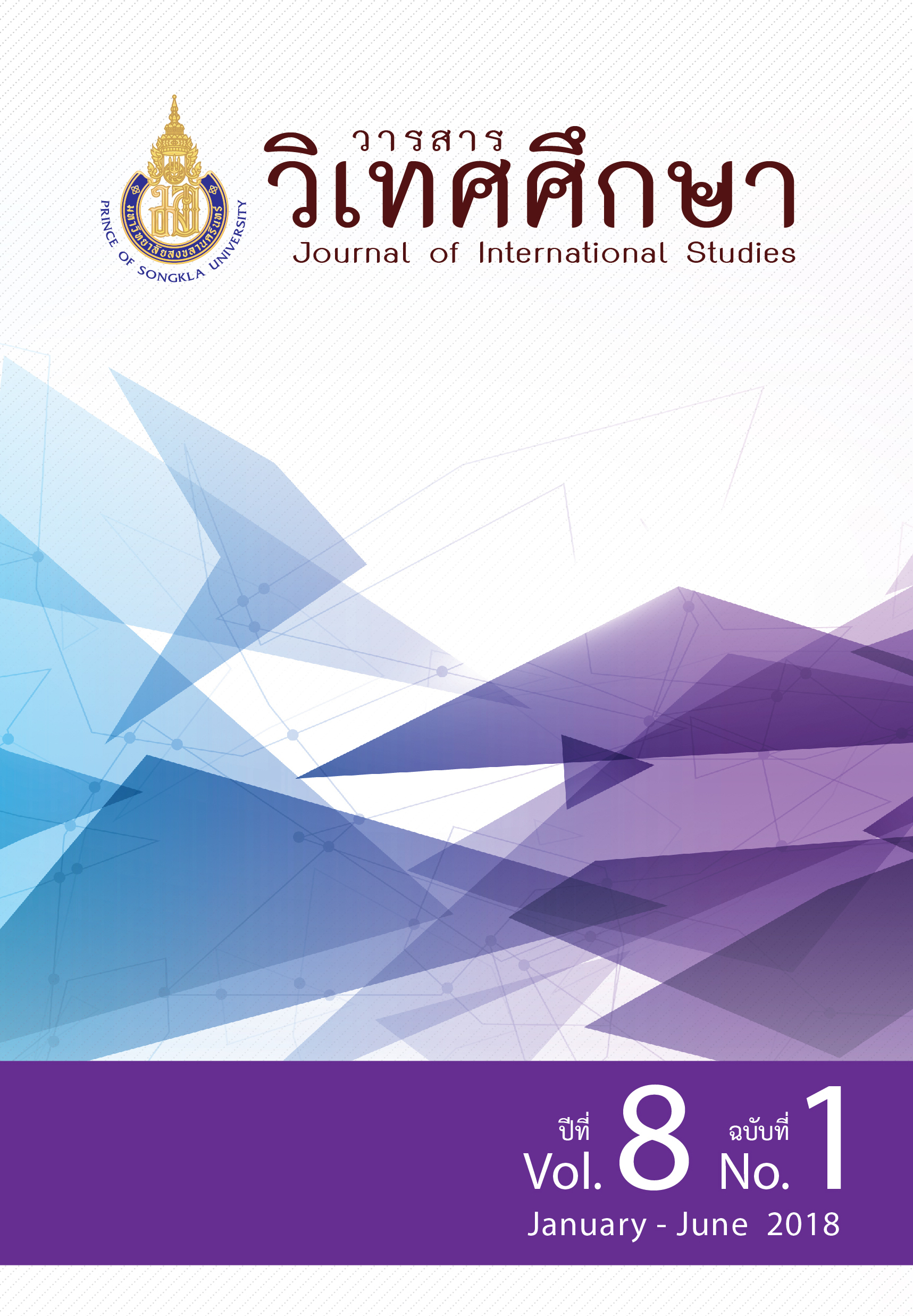Advantages and Contributions of Overseas Chinese in Southeast Asia —Take Koh Hong Beng and Khaw Sim Bee as Examples
Main Article Content
Abstract
Koh Hong Beng and Khaw Sim Bee were two outstanding representatives of overseas Chinese in Southeast Asia. Both of them were born in Southeast Asia in 1850s, and at their time, in the tide of the times of learning from the West, Koh Hong Beng spared no effort to introduce China's fine traditional culture to the Western World by means of translation, writing and diplomacy; Khaw Sim Bee was receptive to the Western culture and advanced systems, contributing a lot to the social and economic development of southern Siam. They reflected the unique advantages of the overseas Chinese in Southeast Asia and their outstanding role in the international exchanges and cooperation. Nowadays, ASEAN countries are in key positions of China-proposed “B & R” initiative, while the exchanges and cooperation between China and Southeast Asian countries are getting closer. So the study of overseas Chinese in Southeast Asia has its practical significance. Adopting historical study and qualitative analysis of literature as the major methodology, this paper aims to take the history as a mirror, and leads to the conclusion that the overseas Chinese in Southeast Asia have advantages of cultural tolerance, economic strength and organizational network, by which they will not only play an important role in promoting the “B & R” initiative, but inject new positive energy into the regional and global development.
Article Details
Statements and opinions expressed in articles herein are those of the authors and do not necessarily reflect the position of the editors or publisher.
Article, information, text, image, etc. which are published in Journal of International Studies, belong to Journal of International Studies. If anybody or any organization would like to use part or whole of them, they must receive written permission from Journal of International Studies before usage.
References
陈小二、陈宇峰.(1995). 论泰国华人对泰国社会的贡献. 云南教育学院学报, 4,77-84。
黄兴涛.(1996). 辜鸿铭文集.海口: 海南出版社.
罗振玉.(1931). 外务部左丞辜君传。 东北从刊,13。
汪洋.(1998). 从华侨到华人再到华族-兼谈东南亚华人同化问题. 东南亚研究,3,55-59。
沈燕清.(2013). 槟城福建华人五大姓氏饷码经营探析.八桂侨刊, 4, 64-70。
盛毅、任振宇.(2015). 发挥东盟国家华侨华人在“一带一路”中的桥梁作用. 东南亚纵横, 10, 28-31。
吴小安.(2005). 殖民主义、本土国家与东南亚华人移民:中国跨国化的一些历史含义. 南洋问题研究,121,80-86。
张帆等.(2016). 一带一路与人民币国际化.“北京大学中国经济研究中心”讨论稿,第2页。
张睿亮.(2016). “一带一路”与中国时代和亚洲世纪的开启. 阿拉伯世界研究,1,第98页。
赵凤昌.(1931). 国学辜汤生传. 人文月刊,2, 4。
赵麟斌.(2016). 略述福州华人华侨对马来西亚经济发展的影响. 闽江学院学报, 3,1-6。
朱杰勤.(2008). 东南亚华侨史. 北京:中华书局.
庄国土.(1992). 清初到鸦片战争前夕南洋华侨人口结构. 南洋问题研究,1,第70页。
庄国土.(2008). 论中国人移民东南亚的四次大潮. 南洋问题研究,133, 69-81。
庄国土.(2010). 华侨华人分布状况和发展趋势. 研究与探讨,4.
Liang, C. (2013). KHAW SIM BEE AND THE NARANONG FAMILY: A SHARED HISTORY OF PENANG AND SOUTHERN THAILAND. Penang Monthly, (5), 8-12.
Cushman,J.W. (1991). Family and State: the formation of a Sino-Thai Tin- mining Dynasty 1791-1932. Singapore: Oxford University Press.
Dunlap, D.(1913).PHYA RASADA: A Biographical Sketch. Penang: Penang Gazette Press Ltd.
Kantang City Municipality. (2014). ยางพาราต้นแรกของประเทศไทย. Retrieved from http://www.kantangcity.go.th/travel/detail/32
Khoo, S. N. (2009). Hokkien Chinese on the Phuket mining frontier: The Penang connection and the emergence of the Phuket Baba community. Journal of the Malaysian Branch of the Royal Asiatic Society, 82, 81-112.
Mackay, C. (2012). A history of Phuket and the surrounding region. Bangkok: White Lotus C。Ltd.
Purcell,V. (1948). The Chinese in Malaya. London: Oxford University Press.
Skinner, G.C. (1957). Chinese Society in Thailand: An analytical History. Ithaca: Cornell University Press.
State Council of the People's Republic of China. (2015). Vision and proposed actions outlined on jointly building Silk Road Economic Belt and 21st-Century Maritime Silk Road. Retrieved from http://language.chinadaily.com.cn/2015-03/30/content_19950951.htm
Wang,G.W. (1959). A Short History of the Nanyang Chinese. Singapore:Eastern Universities Press.
Yip, Y. H. (1969). The development of the tin mining industry of Malaya, Kuala Lumpur and Singapore. Kuala Lumpur: University of Malaya Press.


